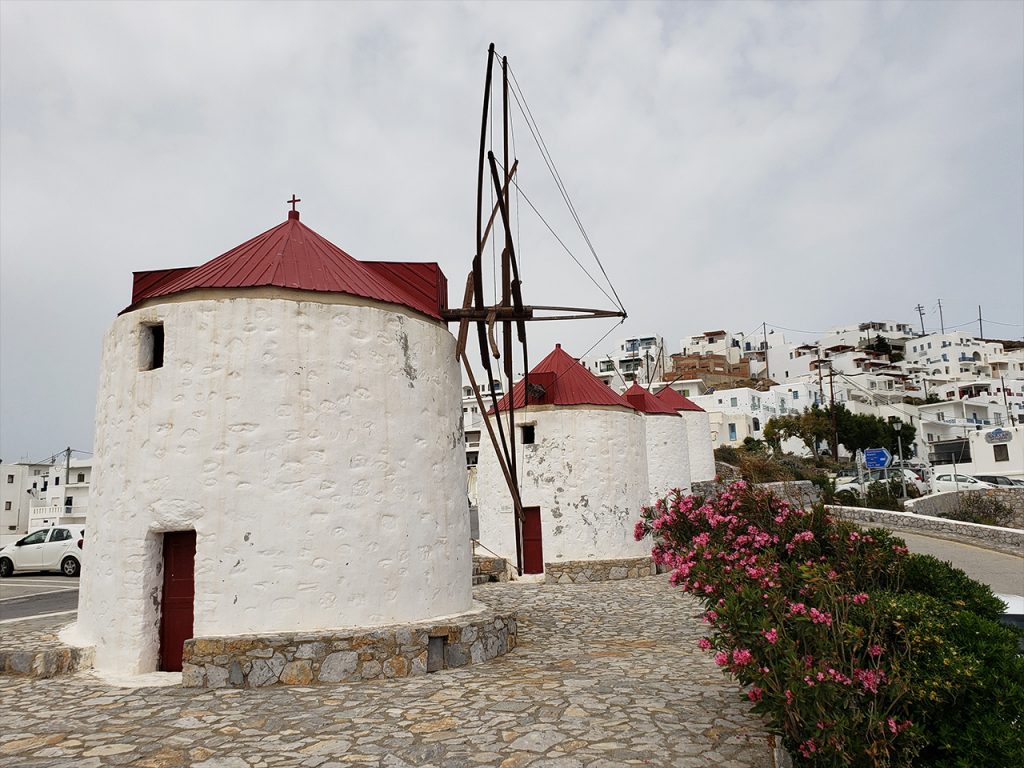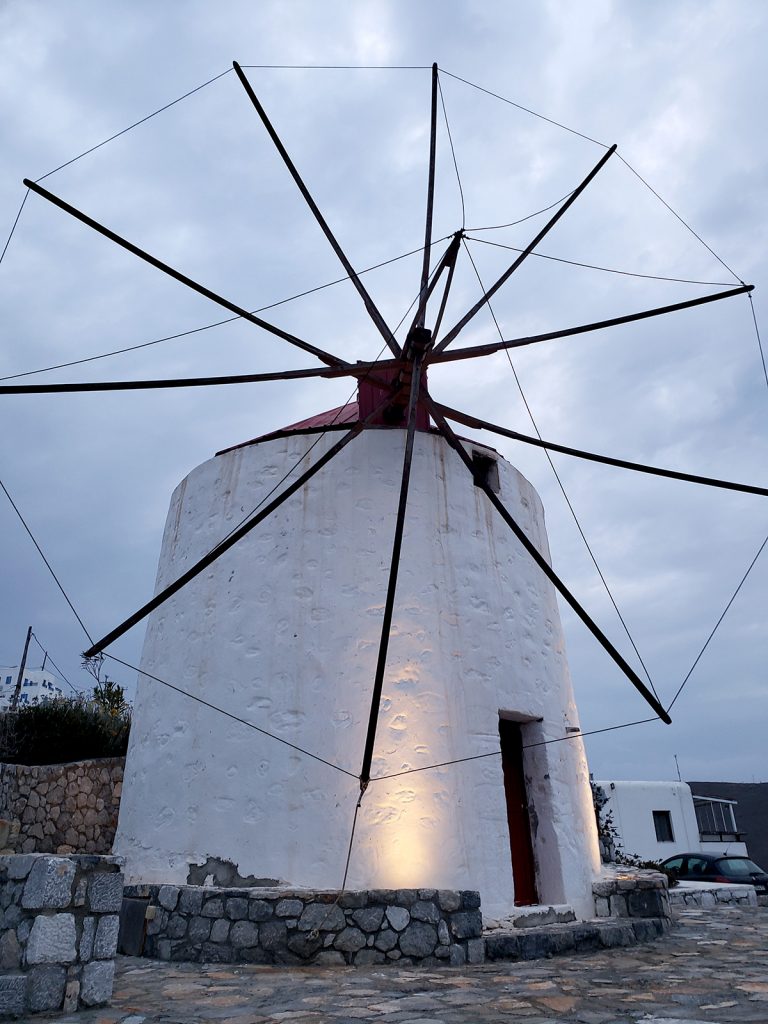
From Athens, we took a short flight to the small island of Astypalea (also sometimes spelled Astypalaia, a bit closer to the Greek Αστυπάλαια). Shaped like a butterfly from above, the island’s main town (or Chora, from Χώρα for “town”) is located in the gap between the two wings of the butterfly. The town features whitewashed Cyclades-style buildings ringing a steep castle-topped hill, spilling down to a small sea port.
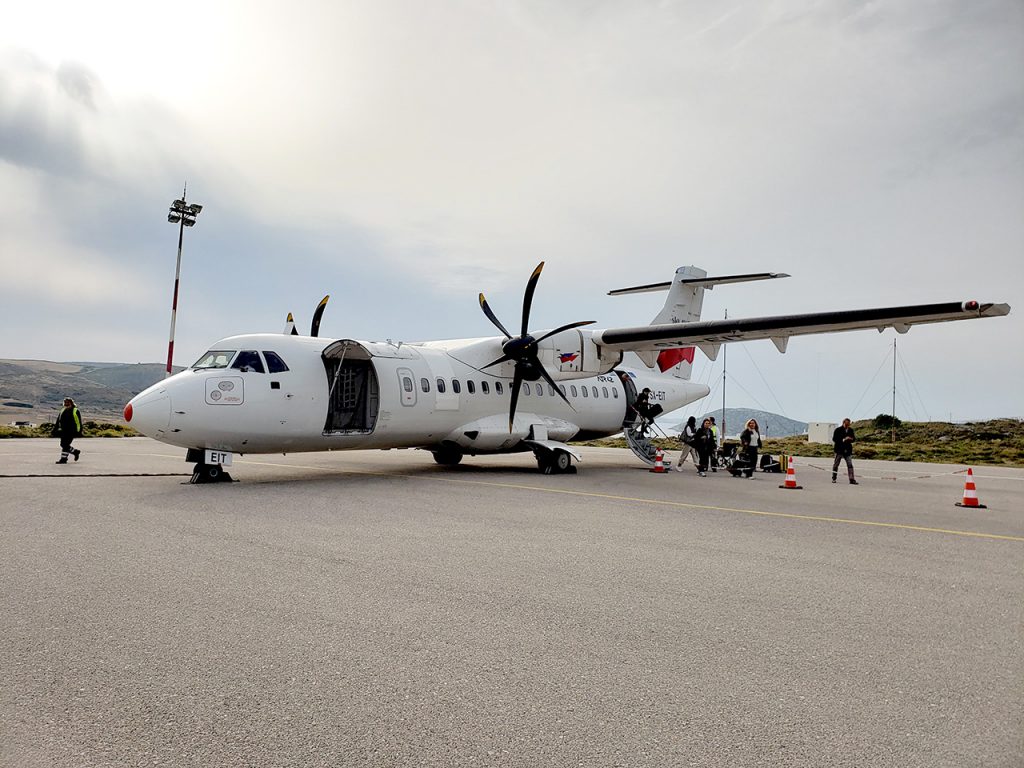
We rather guiltily chose to fly, rather than take the ferries, for practical reasons including a middle-of-the-night ferry arrival schedule. But when we leave in twelve days, we will do so by ferry, working our way more slowly back to Athens via Naxos.
The transition from hectic and noisy Athens to tiny, silent Astypalea could not have been more jarring — in a good way. We flew on a smaller prop plane, and our fellow passengers were a mix of other tourists and locals heading back from the big city, most of whom already seemed to know each other. There is only one runway at Astypalea airport, and passengers disembark down the airplane steps and walk across the tarmac to the small terminal.
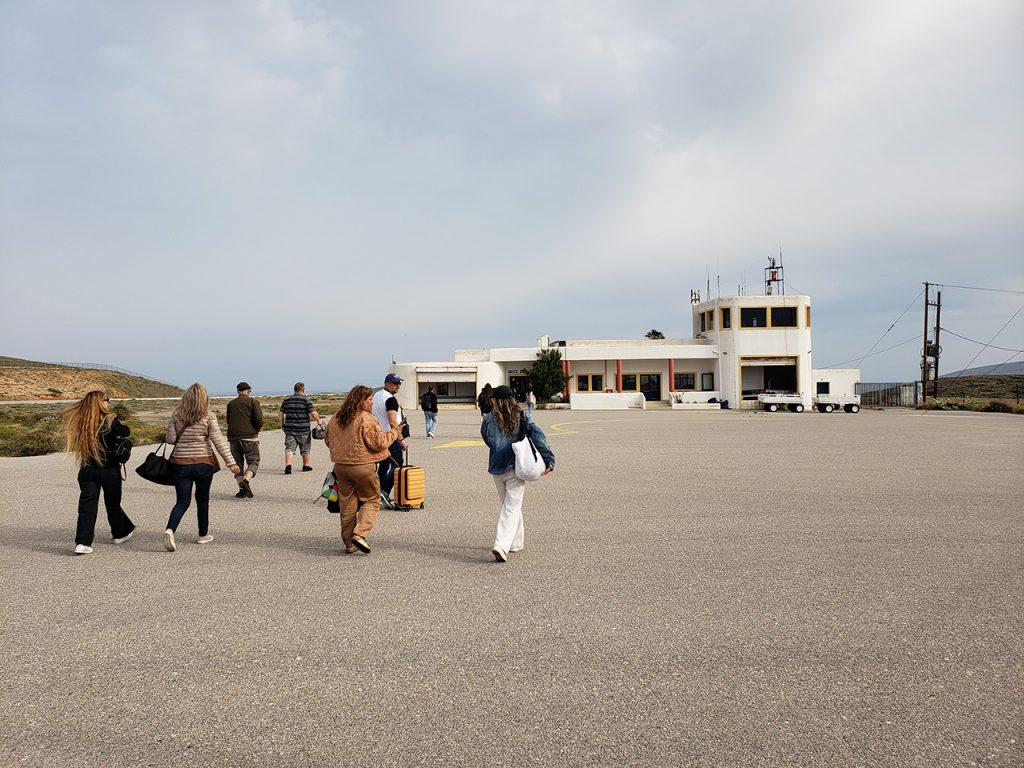
We’re staying in a little house built in the traditional style that is part of a family-run complex just outside the Chora. We can walk into the center of town in about 10 minutes, or take an even shorter (but much steeper) walk down to the small beach cove of Livadi, where there are also some shops and restaurants.
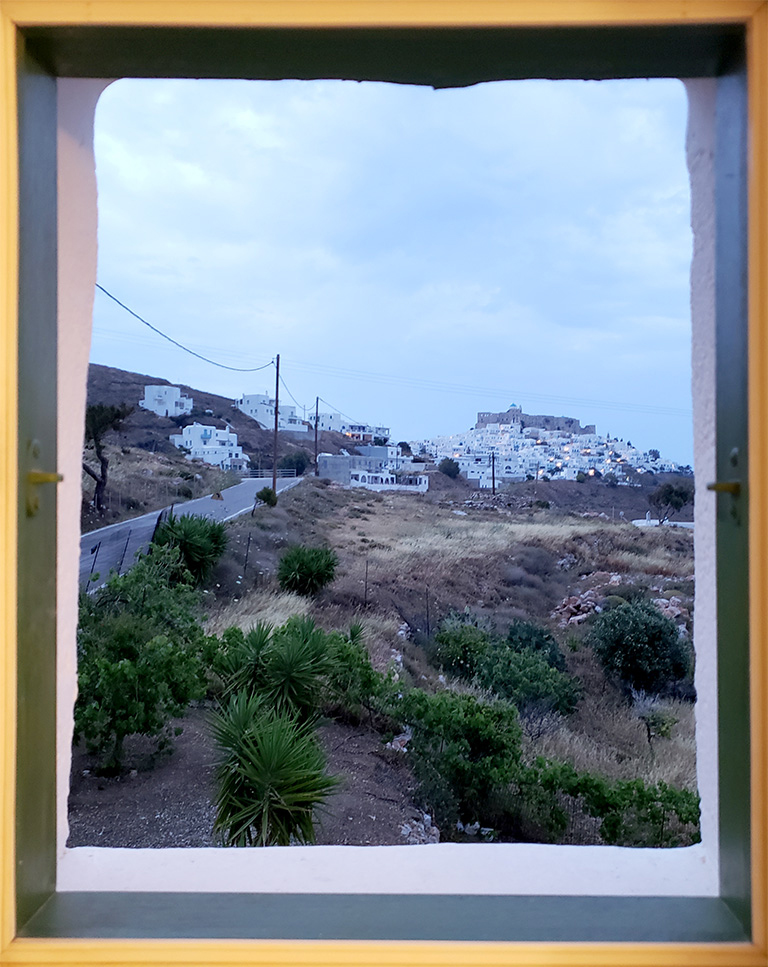
The walks are scenic, with views unfolding in every direction. The weather has been very pleasant, in the lows 20s, but it tends to change quickly. It’s not unusual to go from hot sun to dramatic cloud to drizzly rain and back to sun in the course of half an hour. We’ve learned to carry some clothing layers with us, just in case.
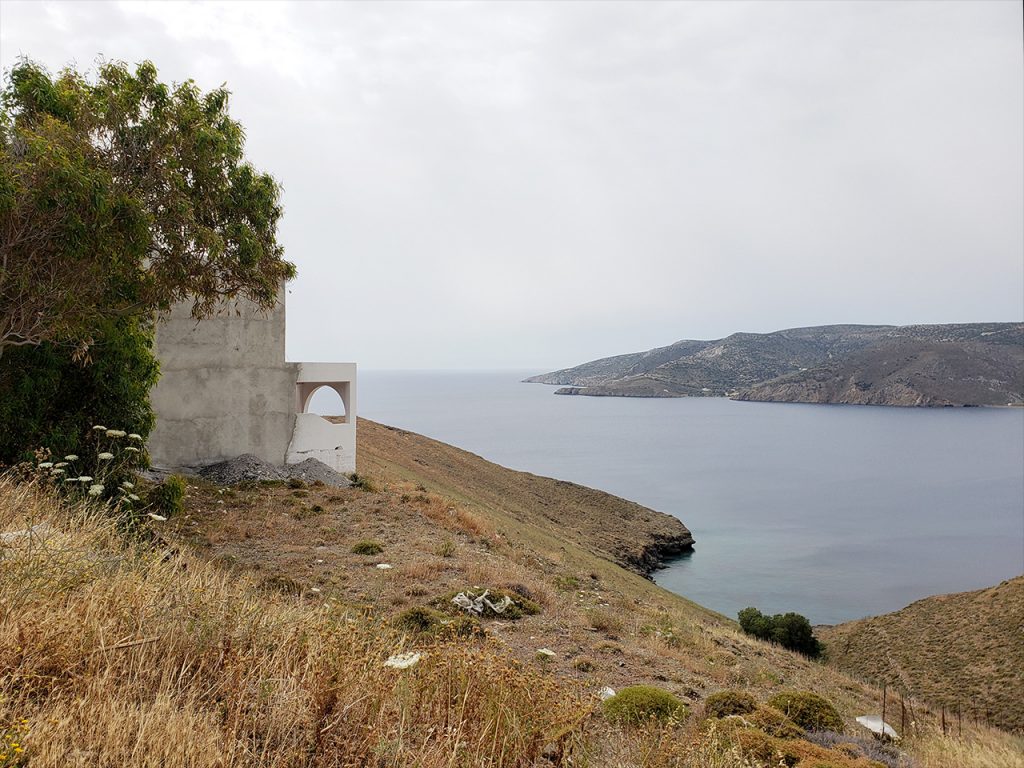
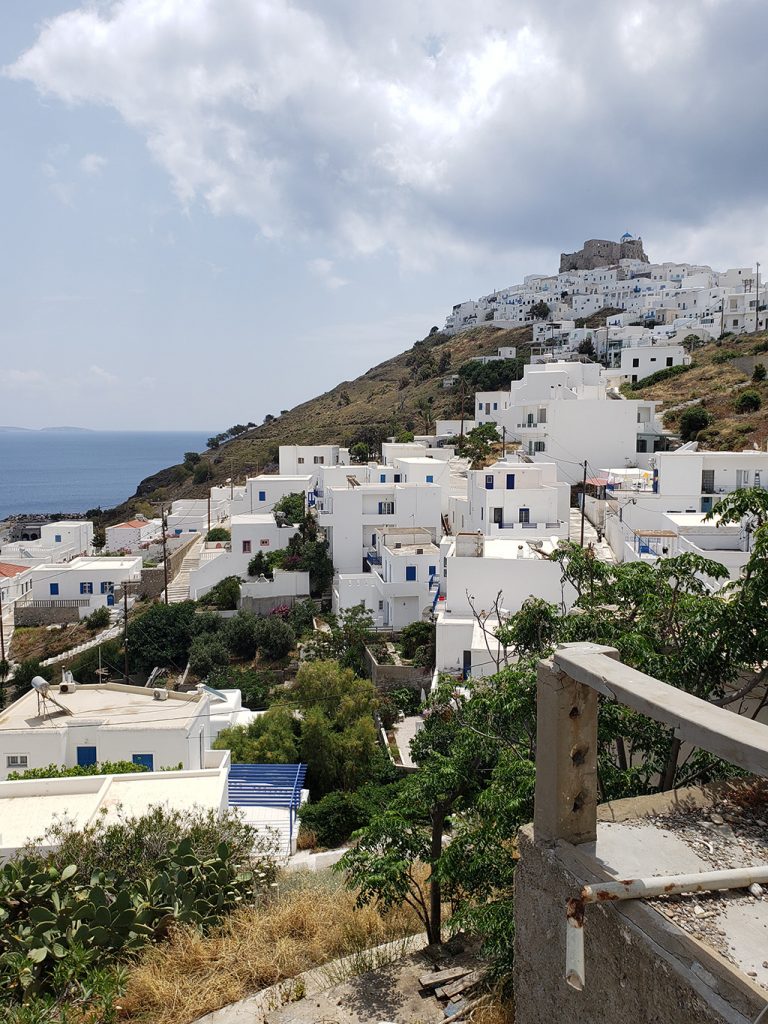
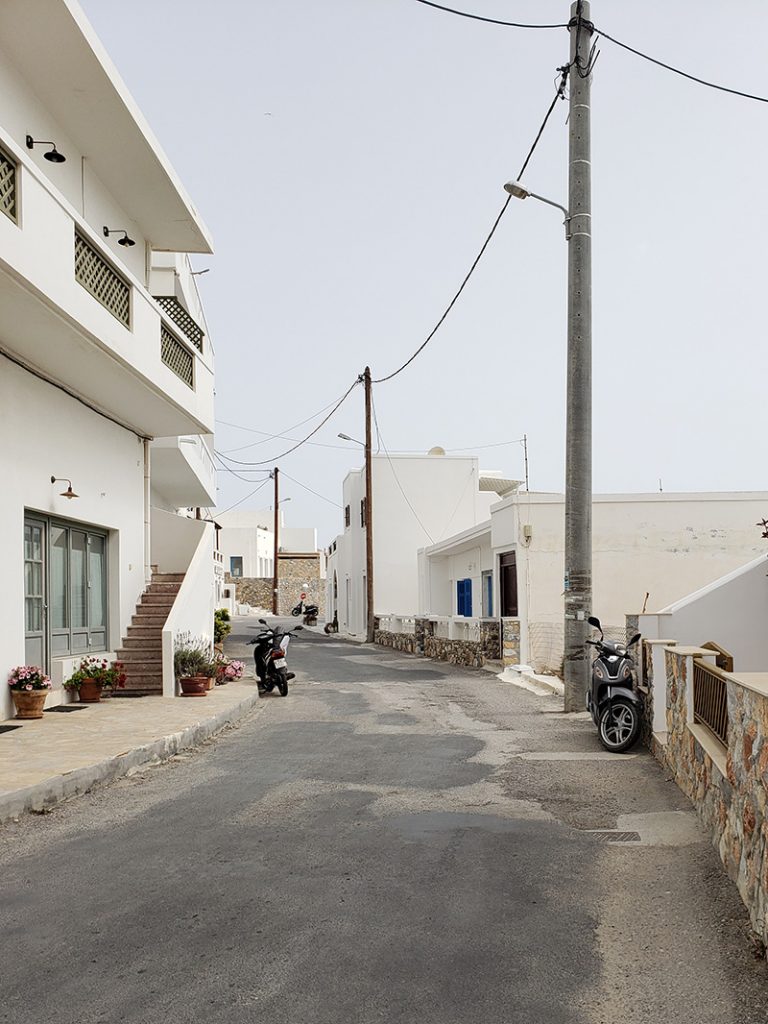
Small motor scooters are a primary mode of transport for locals, zipping them up and down the steep hills quickly, if noisily. Often we see multiple people on one scooter, and even a man zooming along carrying some very long wooden construction beams under his arm.
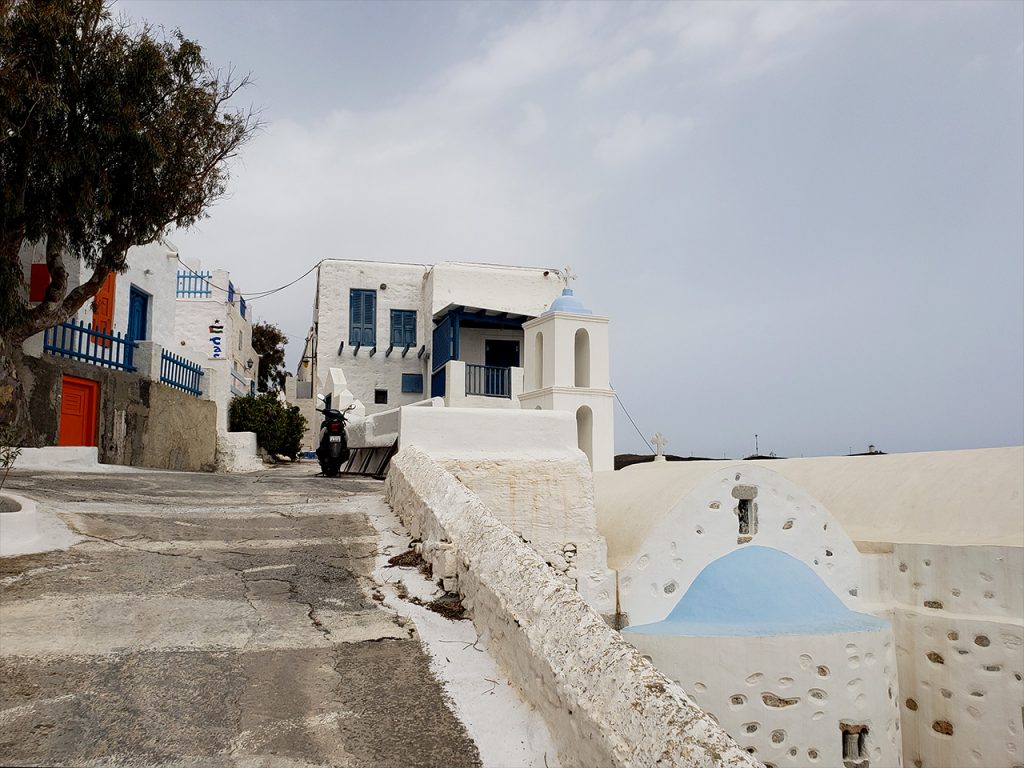
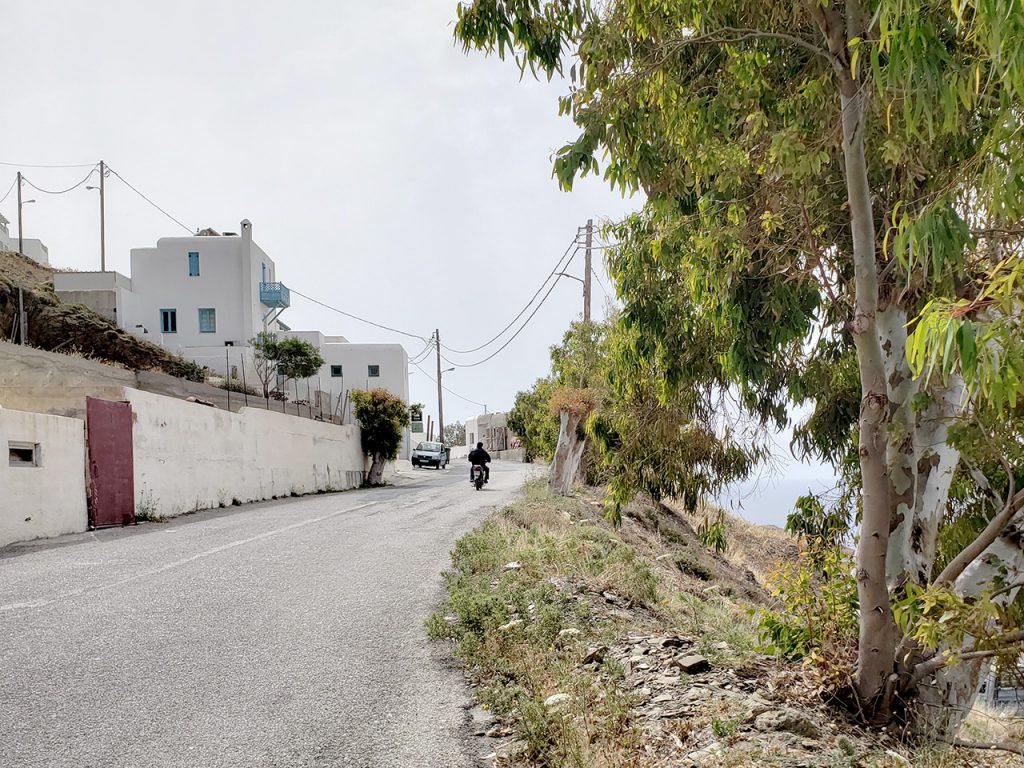
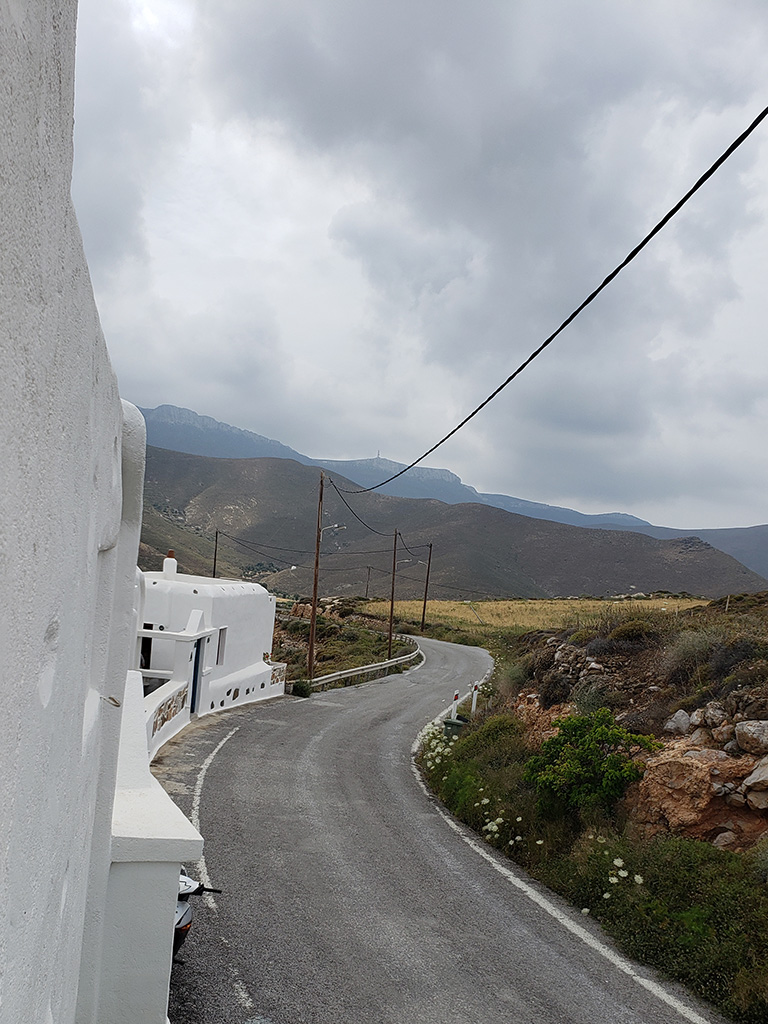
High tourist season doesn’t start for another month or so, but the local business owners are in full preparation mode, whitewashing buildings, cleaning, and preparing for the chaos to come. This does mean a few businesses and restaurants aren’t open yet, but so far there’s been more than enough choice to keep us going.
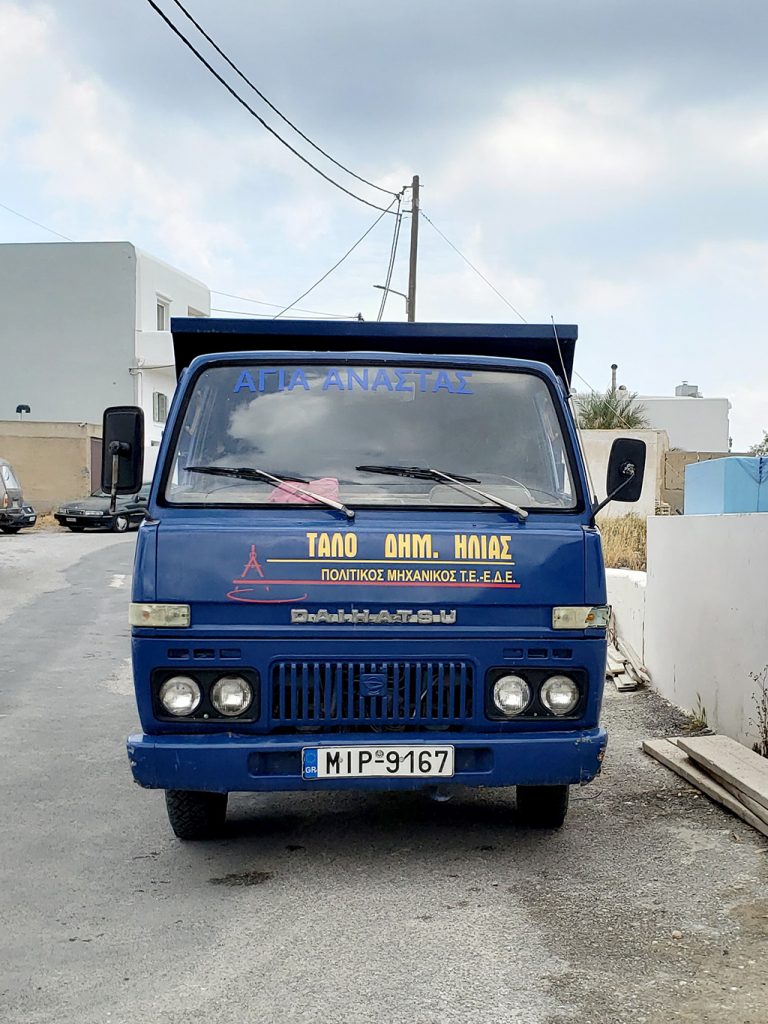
The heart of the Chora is a small square lined with photogenic red-roofed windmills. They’re no longer used for their original purposes, but one has been converted into a small library, and another integrated into a gift shop. Across from the windmills are a row of small and pleasant restaurants and cafes frequented by both locals and tourists.
